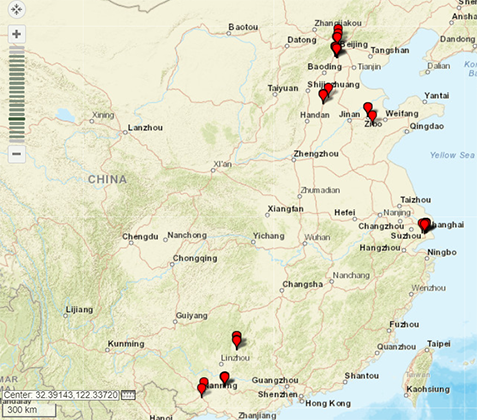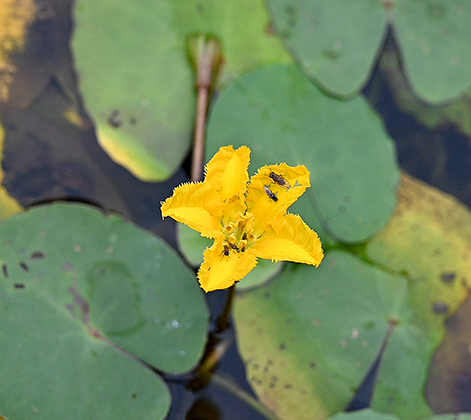Exploring Natural Enemies of the Invasive Yellow Floating Heart in China

Native to China, Nymphoides peltata, commonly known as yellow floating heart, is a highly invasive aquatic weed. It has been introduced into several countries including Ireland, New Zealand, Sweden and the United States.
Invasive aquatic plants cause ecological distress as well as millions of dollars in damages with lost utility value and ecosystem services. Yellow floating heart is a bottom-rooted perennial plant with floating leaves, which can grow in dense mats and reproduce prolifically through both vegetative and sexual means. These dense mats have caused manifold negative environmental and economic impacts, including displacing native species, reducing biodiversity, decreasing water quality, impeding recreational activities and diminishing aesthetic value.

Yellow floating heart is very difficult to control due to its ability to form new plants from rhizomes (root stalks), stolons (plant stems or runners), separated leaves, or seeds. The dispersal of this weed to new locations may be aided by the transport of seeds by birds. However, the trade and potential escape of the weed through the water garden industry may play a larger role in its spread. Other species of the yellow floating heart also have the potential to become invasive. In this regard, Nymphoides cristata, a related species also known as crested floating heart, has been recorded as problematic in Florida.
Biological weed control involves the use of a natural predator of the target plant to reduce the weed’s populations. Recently, Sino-American Biological Control Laboratory (Sino-ABCL) collaborated with Dr. Matthew Purcell from USDA ARS Australian Biological Control Laboratory to conduct preliminary surveys for herbivores of yellow floating heart in China.

In 2021, researchers conducted extensive field surveys at 30 sites in five provinces (Beijing, Hebei, Shandong, Guangxi and Shanghai) and collected samples at 11 sites, where yellow floating heart was established. Data concerning water body and environmental indexes as well as plant leaf physical and chemical parameters were recorded. Insects, that were found to cause damage to the leaf or seeds, were collected. Further studies are planned to evaluate the biocontrol potential of the predators collected.

Contact: Chenxi Liu
The Sino-American Biological Control Laboratory (Sino-ABCL) was established in 1988 through an agreement between USDA ARS and the Chinese Academy of Agricultural Sciences (CAAS) and is based in the Institute of Plant Protection in Beijing. The objective of the Sino-ABCL is to search for, identify, and evaluate the potential of natural enemies of pest insects, weeds, and plant diseases that affect Chinese and U.S. agriculture, develop biological control agents, and evaluate biodiversity of insects based on DNA barcoding. Sino-ABCL established a collaborative working group with local collaborators, most of whom are from local agricultural research units, academies, and universities from 30 provinces in China. These collaborators help Sino-ABCL researchers conduct field surveys for biocontrol agents across China. Sino-ABCL has more than 30 years’ experience in classical biological control and other areas of pest management targeting species that include Asian Longhorn Beetle, salt cedar, soybean aphid, wheat stem sawfly, leafy spurge, emerald ash borer, brown marmorated stink bug, spotted wing drosophila and roseau cane scale. As a fundamental part of its research program, Sino-ABCL conducts studies in insect physiology, insect taxonomy, and insect biochemistry and molecular biology.
